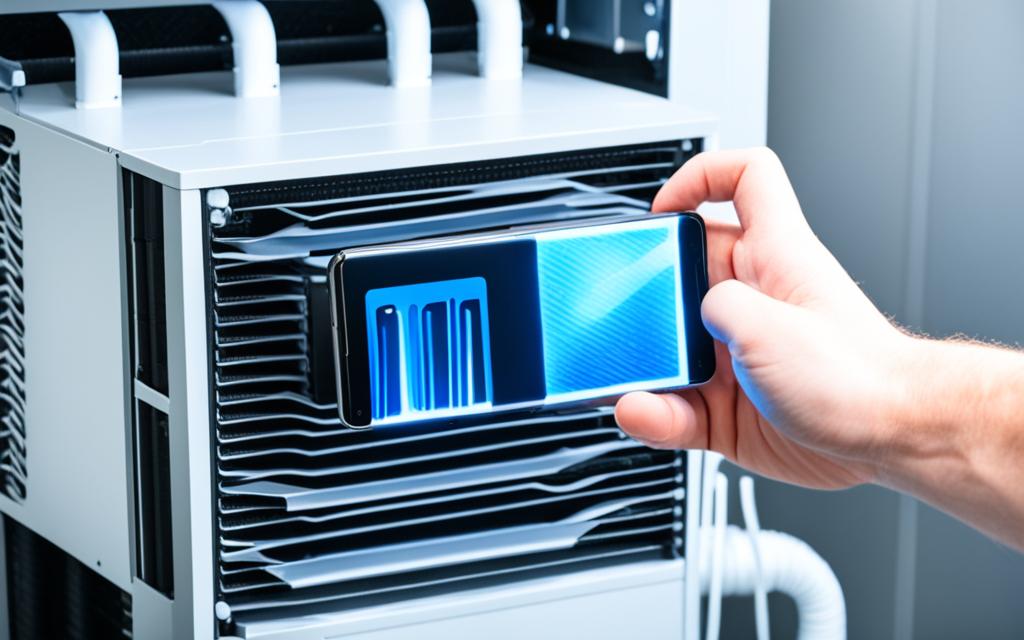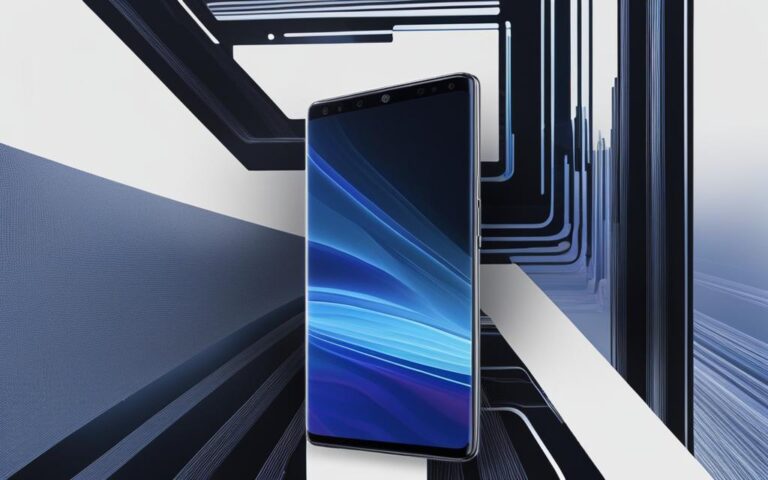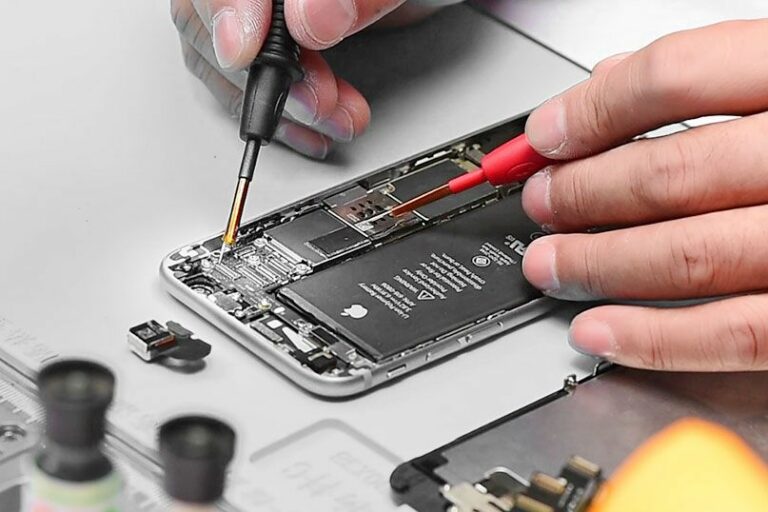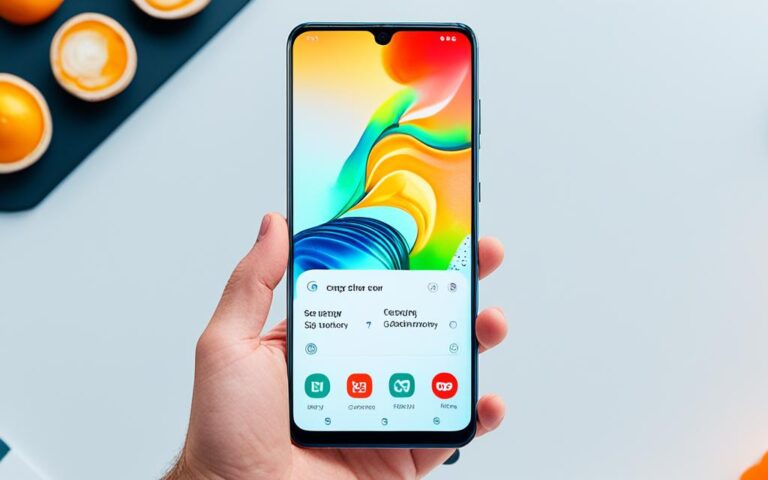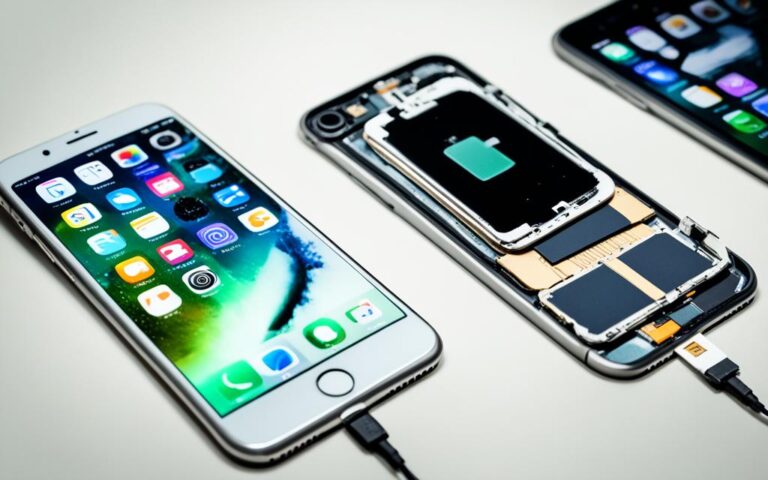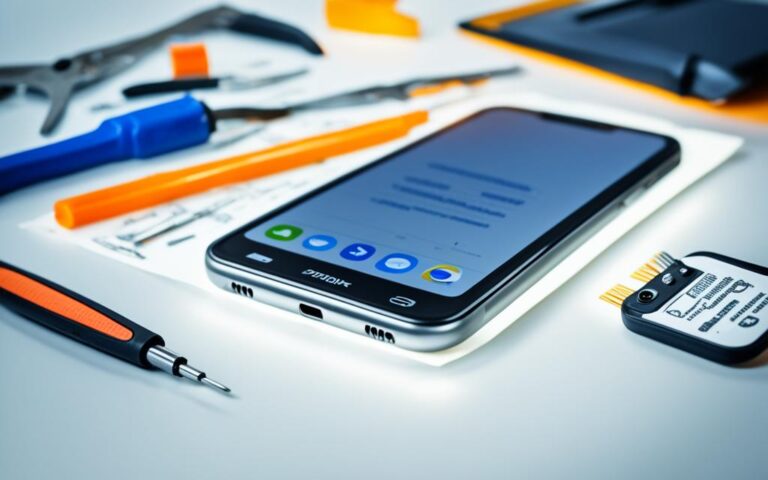Smartphone Thermal Management Repairs for Overheating Issues
Overheating is a recurring problem faced by smartphone users due to the compact and slim design of modern devices. From exposure to high temperatures to heavy usage and damaged batteries, there are various reasons why smartphones overheat. These overheating issues can not only cause discomfort for users but can also lead to serious damage to the device.
To prevent overheating, it is essential to take proactive measures. Users should avoid direct exposure to the sun and high temperatures, close background running apps, and regularly run malware scans. Additionally, avoiding the use of heavy games and HD videos for extended periods, reducing screen brightness, and avoiding phone usage while charging are recommended practices. It is crucial to always use an original charger from a reputable brand to prevent the risks associated with counterfeit chargers.
If a phone starts overheating, there are several steps that users can take to address the issue. This includes removing the phone case, closing all apps and connectivity features, running a malware scan, and avoiding extreme cooling measures such as putting the phone in the refrigerator or freezer. However, if the problem persists, it is advisable to seek professional smartphone repairs.
In the following sections, we will delve deeper into the causes of smartphone overheating, provide tips to prevent abnormal heating in Android phones, and discuss how to help an overheating phone. By understanding the underlying issues and implementing the appropriate solutions, users can enjoy a cooler and more efficient smartphone experience.
Why Does a Smartphone Overheat?
There are several reasons why a smartphone may overheat:
- Flame exposure: Placing the phone near a flame or at a burning object can lead to overheating.
- Insufficient air circulation: Keeping the phone under a pillow or in a locked car can limit air flow and cause overheating.
- Heavy gaming: Playing resource-intensive games for extended periods can put a strain on the phone’s processor, resulting in overheating.
- Corrupt software: A software or app corruption can disrupt the phone’s internal processes and contribute to overheating.
- Damage battery: A damaged or degraded battery can lead to inefficient thermal management and cause the phone to overheat.
- Counterfeit charger: Using a counterfeit or low-quality charger can result in an unstable flow of current, leading to overheating.
- Software/App updates: Running heavy software or app updates in the background can consume significant processing power and generate excess heat.
Understanding the causes of smartphone overheating can help users prevent and troubleshoot this common issue. By addressing these factors and implementing effective cooling strategies, smartphone users can maintain optimal device performance and prolong the lifespan of their devices.
Top Tips to Prevent Abnormal Heating in Your Android Phone
Preventing smartphone overheating is crucial to ensure optimal performance and avoid potential damage to your Android phone. By following these top tips, you can help keep your device cool and prevent abnormal heating:
- Avoid sun exposure: Direct exposure to the sun and high temperatures can cause your phone to overheat. Keep your phone in a shaded area or indoors to prevent excessive heat buildup.
- Close background apps: Running multiple apps in the background can put unnecessary strain on your phone’s processor and lead to overheating. Close apps that you are not actively using to conserve battery and prevent overheating.
- Run malware scan: Regularly scanning your device for malware and malicious apps is essential. Malware can consume system resources and generate excessive heat. Use a reputable antivirus app to scan and remove any potential threats.
- Avoid heavy games: Playing graphically-intensive games or running HD videos for extended periods can significantly heat up your phone. Limit the usage of heavy games to prevent overheating.
- Reduce screen brightness: Keeping your screen brightness at a lower level or enabling auto-brightness can help prevent overheating. High screen brightness can generate excess heat, especially in sunny environments.
- Avoid using the phone while charging: Using your phone while it’s charging increases power consumption and generates additional heat. To prevent overheating, it’s best to avoid using your phone during the charging process.
- Use the original charger: Using an original charger from a reputable brand is important to prevent overheating caused by counterfeit or defective chargers. Counterfeit chargers can deliver unstable currents, leading to overheating and potential damage to your phone.
By implementing these preventive measures, you can help maintain a cool and efficient Android phone, avoiding the common issue of overheating.
Protective Measures for Overheating Phone – A User’s Perspective
“Maintaining an optimal temperature is crucial for the longevity of your smartphone. By following these practical tips, you can protect your device from abnormal heating and ensure a smooth user experience.”
Remember, prevention is always better than cure when it comes to smartphone overheating. By adopting these tips and being mindful of your phone’s temperature, you can enjoy uninterrupted usage and prolong the lifespan of your Android device.
How to Help an Overheating Phone
If your phone starts overheating, it is crucial to take immediate action to cool it down and prevent any serious issues. Here are some steps you can take to help an overheating phone:
- Remove the phone from a hot environment: If your phone is exposed to direct sunlight or kept in a hot car, it can lead to further heating. Be sure to remove it from the hot environment to prevent additional overheating.
- Reset or turn off the phone: By resetting or turning off the phone, you allow it to cool down in a cool place, aiding in the dissipation of heat.
- Try a different charger: Check the charger for any physical damage and consider using a different charger if necessary. Using a faulty or counterfeit charger can contribute to overheating.
- Put offending apps to sleep: Closing or force-closing any apps that are causing the phone to heat up can provide relief and reduce the strain on the device.
- Install OS updates: Keeping your phone’s operating system updated can optimize performance and prevent overheating. Regularly check for available updates and install them.
- Keep apps updated: In addition to the OS updates, keeping your apps updated ensures they are running smoothly and efficiently, reducing the risk of overheating.
- Check for malware: Regularly scan your phone for malware. Malicious software can generate excessive heat and contribute to the overheating problem. Use a reputable antivirus program to ensure thorough scanning.
- Invest in good antivirus: To further protect your phone from malware and potential overheating issues, invest in a reliable antivirus program. It can provide enhanced security and real-time protection against malicious threats.
By following these steps, you can effectively help your overheating phone and prevent any further complications.
Conclusion
Smartphone thermal management is a critical consideration in device development, particularly with the ever-increasing number of heat-producing components packed into slim and compact designs. To dissipate heat effectively and maintain safe touch temperatures for users, thermal engineers employ various types of thermal management materials and solutions.
One notable solution in the field of smartphone thermal management is the implementation of GORE Thermal Insulation. This innovative material acts as a barrier, blocking excess heat and preventing surface hotspots. By reducing surface temperatures and shielding sensitive components from heat exposure, GORE Thermal Insulation enhances the overall efficiency of heat spreading.
Smartphone manufacturers can greatly benefit from implementing proper thermal management strategies. By employing heat spreaders, taking advantage of materials with high thermal conductivity, and incorporating insulating solutions like GORE Thermal Insulation, manufacturers can effectively manage heat dissipation and ensure optimal device performance and user experience.
